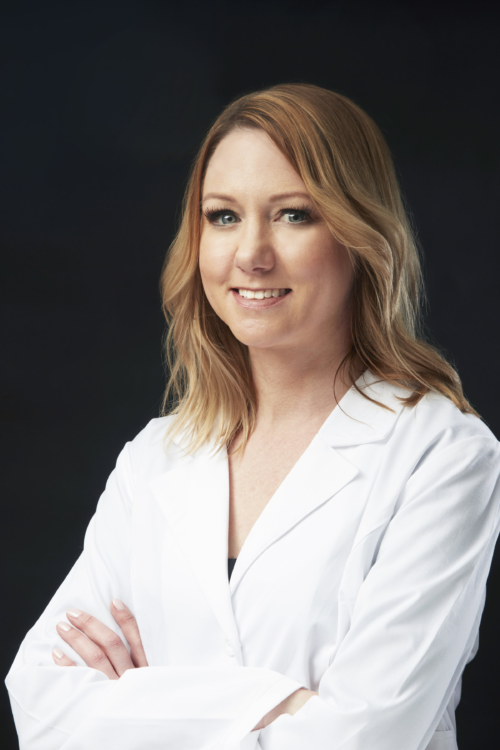Beginning with Ancient Egyptians, humans have been using cosmetics and personal care products to beautify, protect, and treat skin and hair for thousands of years. Over the centuries, colour cosmetics have been used to indicate health, status or self-expression.
However, often the promises of anti-aging properties of some creams are unrealistic and sometimes just plain false. So, who are we to believe in today’s crowded landscape of social media platforms dominated by celebrities and influencers?
On October 23, as part of the 2019 Trottier Public Science Symposium Longing for Longevity, Kelly A. Dobos, a cosmetic chemist with expertise in both skin care and colour cosmetic formulation, will explore recent cosmetic controversies, with a focus on science and safety.
In advance of her lecture, Dobos spoke with the McGill Reporter.
Are there any creams that can actually reduce aging of the skin?
Retinol and its derivatives are still the gold standard for anti-aging in skincare. While many continue to search for the next big thing these ingredients have proven efficacy over a long history of use. These ingredients increase cell turnover and enhance the production of the skin’s structural proteins collagen and elastin.

The most efficacious creams are obtained by prescription and contain retinoic acid, which is the active form of vitamin A. Retinoids, the term used to refer to various forms of Vitamin A like retinaldehyde or Retinyl palmitate, can be less potent because they need to first be converted to the active form in the skin, but they are typically less irritating and easier to tolerate.
Many cosmetics claim to be “parabens-free.” What is the issue with this preservative?
In order to protect consumers, cosmetics need good preservatives that have broad-spectrum activity against bacteria, yeasts and molds that are effective in packaging and throughout the duration of use.
Parabens are a class of preservatives that have a long history of safe use. In fact, they have GRAS (generally recognized as safe) status for use in food in the US and occur naturally in many fruits and vegetables.
They have come under intense scrutiny after the publication of a controversial study in 2004 which found paraben metabolites in breast tumours. The study presented this information in the context of the weak estrogen-like properties of parabens and the influence of estrogen on breast cancer.
But the study left many questions unanswered and did not show that parabens cause cancer, or that they are harmful in any way. This study also did not have a control to evaluate paraben metabolite levels in normal tissue.
Additionally, the researcher who led the 2004 study, Philippa Darbre, eventually responded in the Journal of Applied Toxicology in which the study was published stating that, ‘No claim was made that the presence of parabens had caused the breast cancers.’ Unfortunately, misinformation and fear-mongering have caused manufactures of cosmetics to move away from these safe and effective preservatives.
Some face creams cost a few dollars; others can cost hundreds. What is the difference?
There are many factors which going into the cost of cosmetic and personal care products. Ingredients, packaging, product development and manufacturing overhead, marketing, etc. I’m a firm believer, due to all of my studies and time in the cosmetic industry, that higher cost does not always mean better efficacy.
Our consumer brains have been trained to think if a product costs more it must be better, but in reality, extravagant packaging or celebrity endorsements can drive up cost. That being said, there are some ingredients which command a higher price point. Do you your research and consult the opinion of a cosmetic chemist, many of use social media or have blogs to discuss the science behind the products you use every day.
What cosmetics (if any) do you use yourself?
I’m a big fan of The Ordinary by DECIEM. They have a bevy of different products that utilize effective concentrations of ingredients that are backed by research at very reasonable prices. The packaging and marketing are minimal which likely contributes to the favourable cost.
A staple in my routine is their Granactive Retinoid (hydroxypinacolone retinoate) in squalene. It’s less irritating than traditional retinol and was shown to be highly stable against oxidation so it’s efficacy won’t diminish over time.
Two other ingredients stand out for their contributions to the product – dimethyl isosorbide boosts penetration of the retinoid; and squalane, a plant derived lipid that helps soothe irritation.
I use Neutrogena Hydroboost Gel Face Cream with SPF daily, and I also use their sunscreens for body. Cosmetic chemist tip, the best defense against accelerated skin aging is daily use of sunscreen!
I spend a lot of time in the cosmetics isles of stores and frequent retailers like Sephora and Ulta often to see and test the latest products. So, I’m also trying new things often. And I read a lot of labels. I also love to play with colour cosmetics, whether it’s a swipe of bold red lipstick that gives my mood a little kick or a mani-pedi to treat myself to a little respite from hectic days. Incidentally, I just organized and cleaned out my makeup stash. There were twenty-one different lipsticks!
The 2019 Trottier Public Science Symposium will be held on October 22-23. All events will take place at the Centre Mont-Royal (1000 Sherbrooke Street West, corner Mansfield). Free. General Seating. No reservations required. Get more information online.
